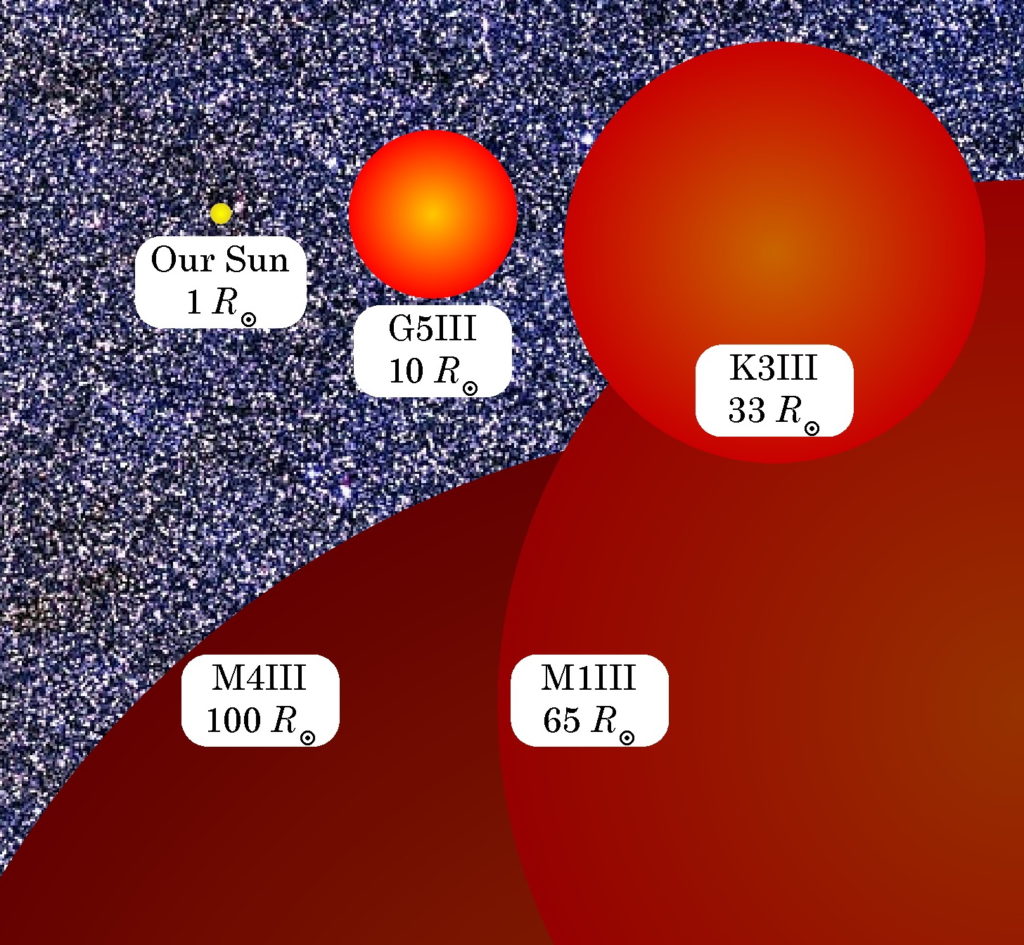Astronomers have a new tool to help them understand giant stars. It’s a detailed study of the precise temperatures and sizes of 191 giant stars. The authors of the work say that it’ll serve as a standard reference on giant stars for years to come.
It’ll also shed some light on what the Sun will go through late in its life.
The study began in 1997 when a group of astronomers started making high-precision measurements of giant stars with the Palomar Observatory’s Testbed Interferometer (PTI). It was built as a testbed for the upcoming Keck Interferometer in Hawaii. The PTI closed down in 2008 and astronomers kept collecting data on giant planets until it closed. After that, astronomers used telescopes at the Lowell Observatory to keep collecting data, and amateur astronomers chipped in, too.
Gerard van Belle from the Lowell Observatory led the study and is the lead author. He’s an expert in interferometry and is a member of the astronomer faculty at Lowell. He’s also Chief Scientist for the Navy’s Precision Optical Interferometer. The study is titled “Direct Measurements of Giant Star Effective Temperatures and Linear Radii: Calibration against Spectral Types and V ? K Color” and it’s published in The Astrophysical Journal.
Giant stars are different from main-sequence stars or dwarf stars. All of the hydrogen available for fusion in their cores is depleted and they’ve left the main sequence. Compared to a main-sequence star or dwarf star with the same temperature, a giant star will be more luminous and have a larger radius. They can be between tens and thousands of times more luminous than the Sun and have radii a few hundred times greater than the Sun’s. Stars more luminous than giant stars are called supergiants and hypergiants.

This isn’t the first time astronomers have done a detailed survey of giant stars. One 2003 study surveyed 85 giant stars with the Mark III Stellar Interferometer at the Mount Wilson Observatory. But this new one is noteworthy not only for the number of stars measured but also for its high precision. The PTI was highly-efficient and partly robotic. This allowed it to collect “… large amounts of stellar fringe visibility data on any given night…” according to the authors. It also gathered data in between other scheduled observing tasks. In a press release Van Belle said, “At best, every other study is only half this size, in terms of the number of stars.”
The temperature measurements are particularly precise and are two to four times more accurate than previous studies. “This means that if you tell me what colour a star is or if you tell me what type of star it is, I can tell you its temperature and be much more confident in that,” van Belle explained.

This study is valuable for a number of reasons, including in exoplanet studies.
When astronomers find an exoplanet, nearly everything they can learn about it is in relation to the star it orbits. The mass and luminosity and size of the star are used to infer the characteristics of the planet, like its mass, size, and density. So the more accurate star measurements are, the more accurate planet measurements are.
The study can also tell us what’s in store for the Sun.
Astronomers know that eventually the Sun will become a red giant and will swell in size, engulfing Mercury and Venus, maybe Earth, too. But there’s a lot we don’t know about that process, and about giant stars in general. The amount of swelling is unclear, with estimates ranging from 10 to 100 times its current size. The data in this study will help astronomers understand what will happen to the Sun when it swells, and will also explain some of our star’s current processes.

